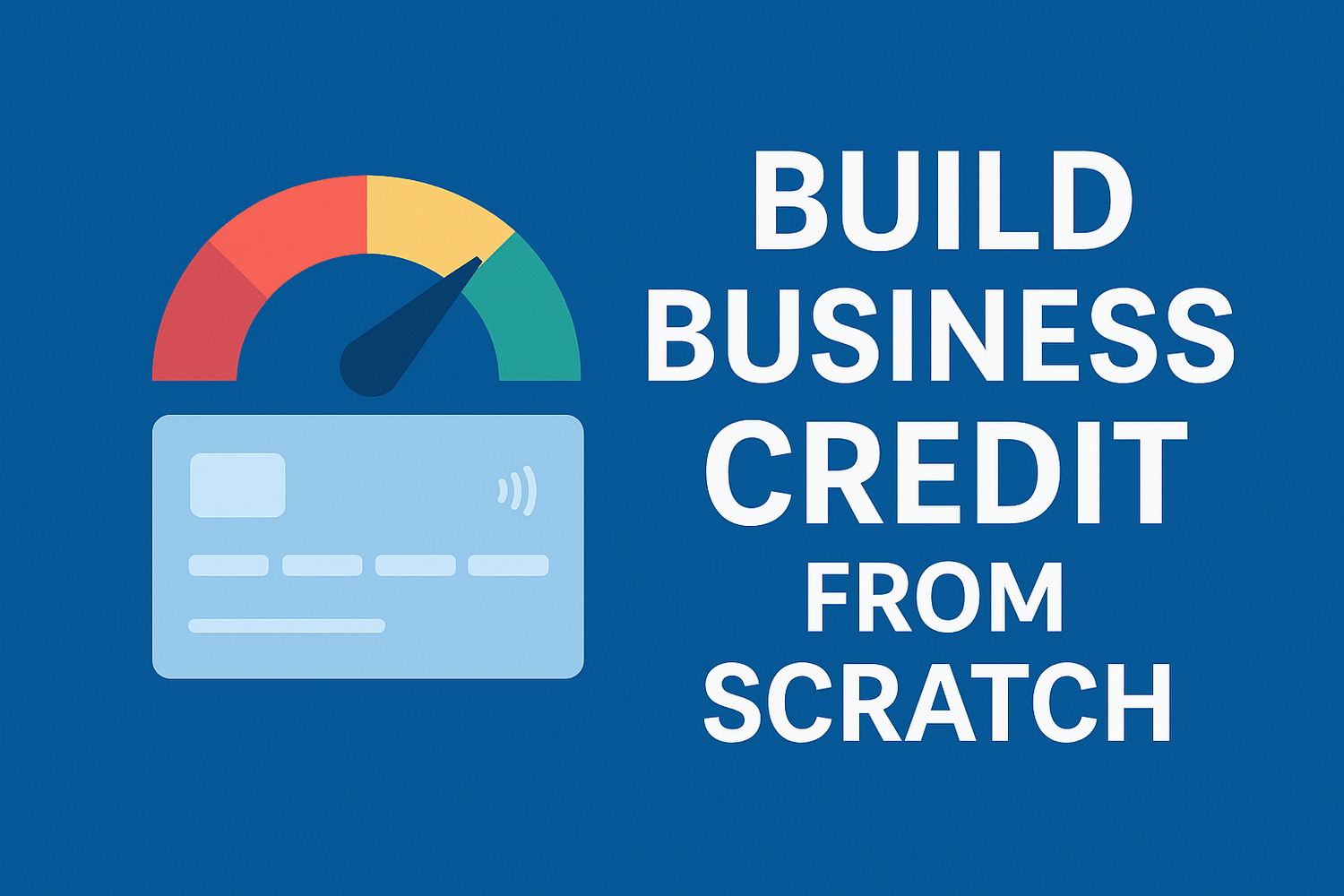

Build Business Credit from Scratch (2025 Guide)

Strong business credit helps small businesses qualify for better rates, higher credit limits, and faster approvals on lines of credit, cards, equipment financing, and more. If you’re just starting—or you’ve only used personal credit—this step-by-step guide shows you how to build a credible business profile from zero in 2025.
1) Establish the Right Business Foundations
- Form a legal entity: LLC or Corporation (keeps business credit separate from personal).
- Get an EIN: Free from IRS—use this on all business applications (not your SSN).
- Business address & phone: Use a real address (or virtual office) and a dedicated business phone.
- Professional email & website: Use your domain (e.g., info@yourbusiness.com) and a basic site.
- Open a business bank account: Keep all income/expenses separate from personal funds.
2) Create Your Business Credit Profile
U.S. lenders commonly reference these bureaus. Set up and verify your profiles:
- Dun & Bradstreet (D&B): Request/verify your D-U-N-S® number (free).
- Experian Business: Ensure your company info (address, industry, ownership) is correct.
- Equifax Business: Confirm listing and details; fix any mismatches.
3) Start with Vendor (Net-30) Trade Lines
Vendor accounts that report to business bureaus help you build history without a personal guarantee (PG). Place small orders and pay early:
- Office/warehouse supplies vendors that report to D&B/Experian/Equifax
- Fuel/fleet cards for businesses with vehicles
- Packaging, cleaning, or industrial supplies that invoice Net-30
4) Add Starter Business Credit Cards (Responsible Use)
Once you have a few reporting trades, apply for entry-level business cards. Some may require a PG early on; that’s normal while your file is thin. Keep balances low (<30% utilization) and pay in full monthly to build positive history.
5) Graduate to Bank LOCs & Higher Limits
With 6–12 months of clean reporting:
- Request credit limit increases on cards/vendors you use often.
- Apply for a business line of credit with your bank or a national lender.
- Consider equipment financing or working-capital term loans if needed for growth.
6) Monitor Your Scores & Keep Data Accurate
- Check D&B, Experian Business, and Equifax Business quarterly.
- Dispute incorrect tradelines or addresses immediately.
- Track payment timeliness—on-time/early payments drive scores.
7) Common Mistakes to Avoid
- Mixing personal and business funds (hurts credibility and taxes).
- Inconsistent NAP data across applications and bureaus.
- High utilization (keep balances below 30%).
- Late payments (even one late can suppress scores for months).
8) A Realistic Timeline (From Zero to Strong)
- Month 0–1: Form entity, EIN, bank account, website, phone/address.
- Month 1–3: D-U-N-S set, 3–5 Net-30 vendors reporting; pay early.
- Month 3–6: Starter business cards; keep utilization low; avoid lates.
- Month 6–12: Consider bank LOC/equipment financing; request CLIs.
Educational content only. Policies, underwriting, and reporting can vary by lender and vendor. Always confirm current requirements.
Frequently Asked Questions
1) Do I need a D-U-N-S number to build business credit?
Yes—most vendors that report to D&B key off your D-U-N-S number. It’s free and helps ensure your trades post correctly.
2) Can I build business credit without a personal guarantee?
Early on, some accounts may require a PG. As you add trades and maintain perfect payment history, you may qualify for no-PG vendor accounts and cards.
3) How many trade lines should I start with?
Aim for 3–5 reporting Net-30 vendors, paid early. After 3–6 months, consider starter business cards and small bank credit lines.
4) How long before I qualify for a line of credit?
With clean reporting and stable revenue, many businesses see approvals for basic LOCs around the 6–12 month mark—underwriting varies.
5) What hurts business credit the most?
Late payments, inconsistent business information, high utilization, and opening too many new accounts too quickly.
© 2025 ChicagoBusinessLoans.com — Business Loan Education Coast to Coast. Educational content only.